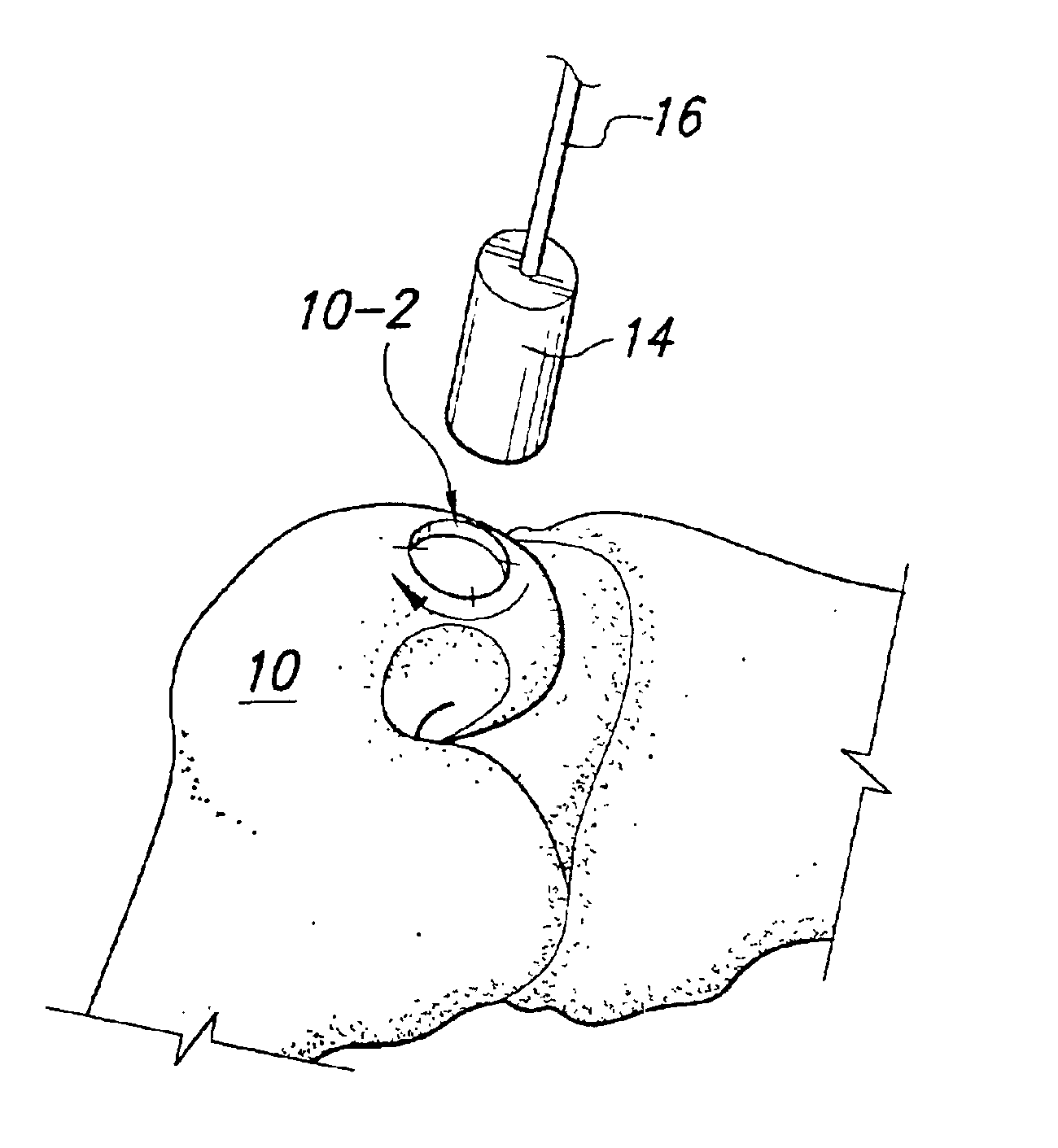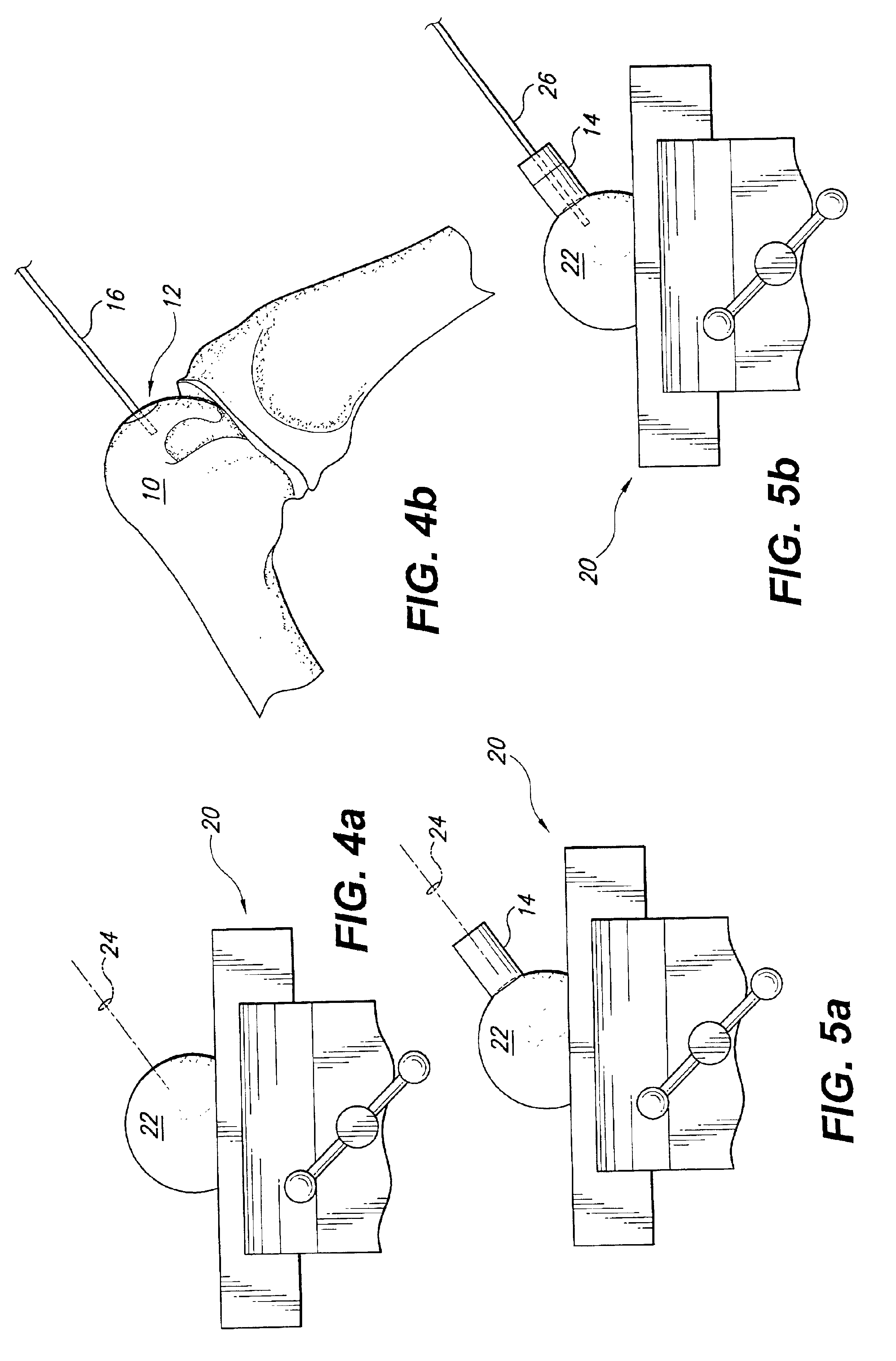Osteochondral transplant techniques
a technology of osteochondral and articular surfaces, applied in the field of surgical transplant techniques, can solve the problems of femur and tibia articular surfaces at risk of damage, and the use of osteoarticular allografts is not typically used,
- Summary
- Abstract
- Description
- Claims
- Application Information
AI Technical Summary
Benefits of technology
Problems solved by technology
Method used
Image
Examples
Embodiment Construction
One particularly preferred technique for transplanting osteoarticular allografts according to the present invention is depicted schematically in accompanying FIGS. 1-15 In this regard, the patient is prepared initially by the surgeon making an incision along the lateral border of the patella. The patella is drawn back medially in order to expose the patient's condyle 10. The condylar defect 12 is visually identified by the attending surgeon and a bone cutter / guide 14 selected which is of sufficient size so as to bound entirely the identified defect 12. Conventional sizes of the bone cutter / guide 14 that may be selected include, for example, 20, 25, 30 or 35 mm diameter cutters.
As shown in FIG. 2, the cutter / guide 14 is initially simply rested upon (not pushed against) the surface of the condyle 10. While in such an initial position (e.g., with the aid of a surgical assistant holding the cutter / guide 14 in place), the Steinmann pin 16 may then embedded into the condyle 10 to a depth ...
PUM
 Login to View More
Login to View More Abstract
Description
Claims
Application Information
 Login to View More
Login to View More - R&D
- Intellectual Property
- Life Sciences
- Materials
- Tech Scout
- Unparalleled Data Quality
- Higher Quality Content
- 60% Fewer Hallucinations
Browse by: Latest US Patents, China's latest patents, Technical Efficacy Thesaurus, Application Domain, Technology Topic, Popular Technical Reports.
© 2025 PatSnap. All rights reserved.Legal|Privacy policy|Modern Slavery Act Transparency Statement|Sitemap|About US| Contact US: help@patsnap.com



